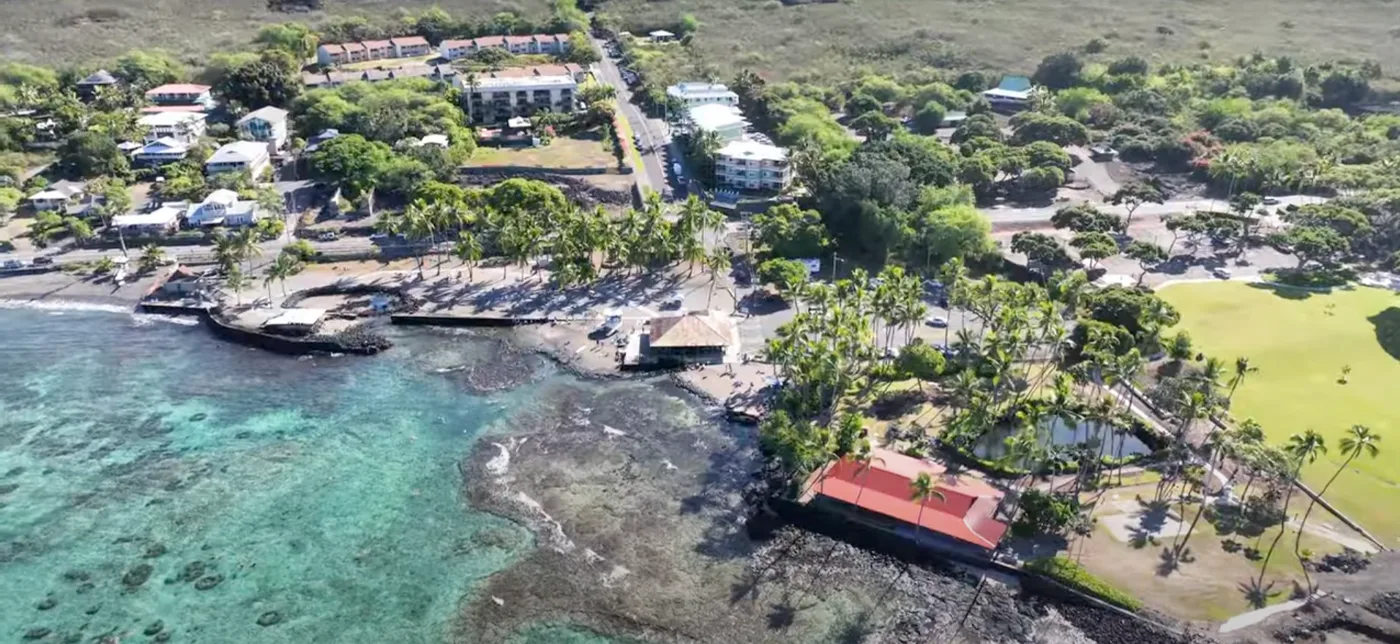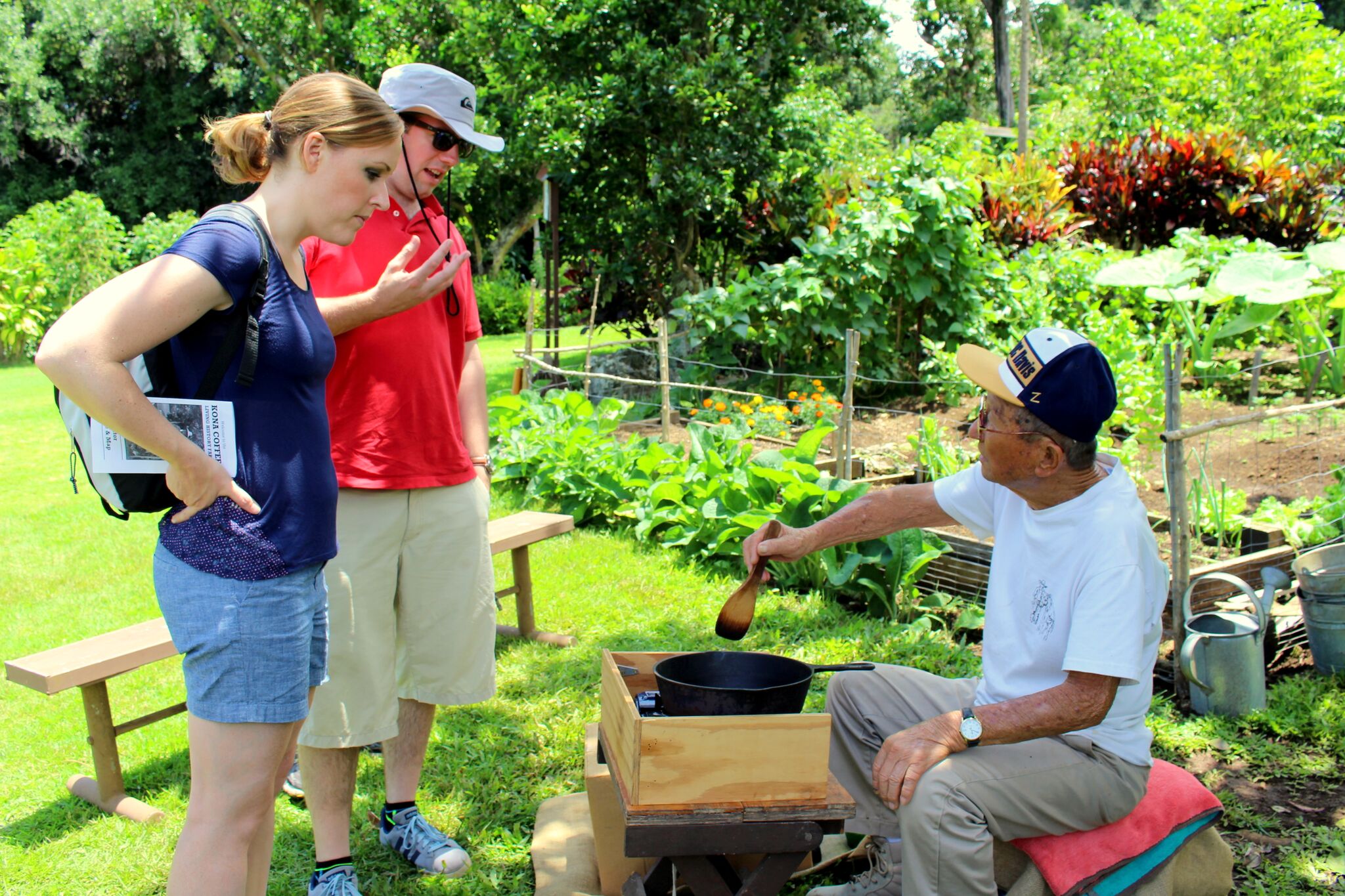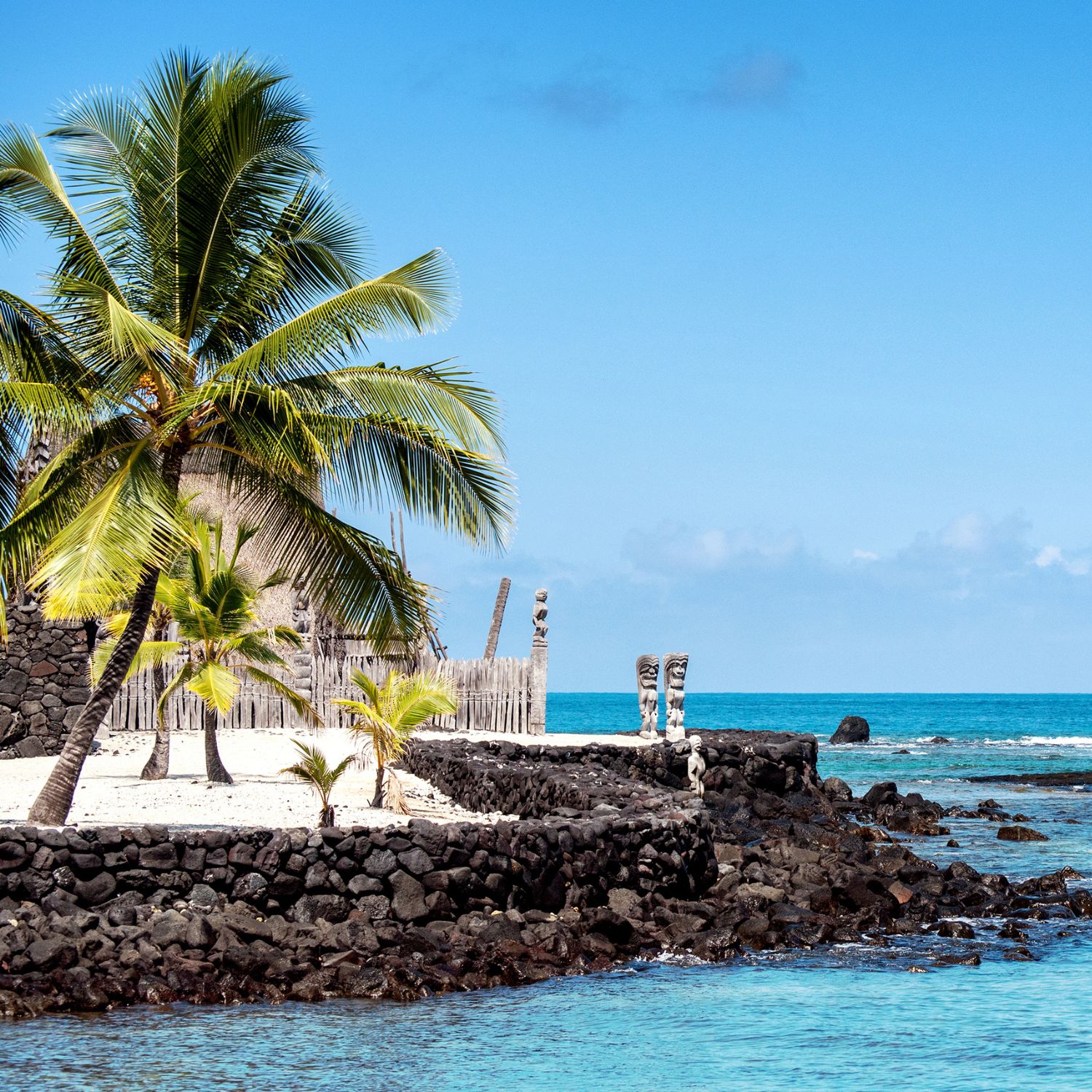If the Big Island had a heartbeat, it would thump along the black lava coastlines of Kona. Stretching from the lava plains of South Kona to the resorts of Waikoloa, this side of the island offers more sunshine, more oceanfront, and more variety than you might expect. It's where Hawaiian royalty once ruled, where world-famous Kona coffee grows on misty mountain slopes, and where every sunset feels like a celebration. Whether you’re snorkeling in turquoise bays, exploring sacred sites, or sipping single-origin brew with a coastal view, the West Side of the Big Island delivers laid-back adventure with a deep cultural core.
Kailua-Kona: The Town That Anchors It All
At the heart of the West Side is Kailua-Kona, often just called Kona Town. Once a retreat for Hawaiian aliʻi (royalty), it’s now a lively mix of shops, cafes, farmers markets, and oceanfront restaurants—all fronted by the calm waters of Kailua Bay.
Stroll Aliʻi Drive, where oceanfront patios and shave ice stands mix with landmarks like Huliheʻe Palace, a former royal vacation home, and Mokuaikaua Church, the oldest Christian church in Hawaiʻi. Across the street, seawalls double as prime sunset-viewing benches, and snorkel boats launch toward reefs just offshore.
It’s a town that never feels rushed. Mornings start slow with local coffee and papaya bowls. Afternoons bring paddlers to the bay and shoppers to the Kona Farmers Market. Evenings stretch long, with live music, mai tais, and the sound of waves tapping against the rocks.
Beaches, Bays, and Snorkeling Spots

Kona’s coastline is rugged and volcanic, but tucked between lava outcroppings are some of the best beaches and snorkeling bays in the islands.
- Kahaluʻu Beach Park: Shallow, fish-filled, and perfect for beginner snorkelers. Turtles often glide through the reef here, and the calm waters make it ideal for kids and first-timers.
- Honaunau Bay (Two Step): Known for crystal-clear waters and vibrant coral, this spot just south of Kona is a favorite for snorkeling, scuba diving, and dolphin spotting.
- Magic Sands Beach: Named for how its sand comes and goes with the tides, this local favorite is great for boogie boarding and beach hangs when conditions are right.
- Makalawena Beach: A bit of a trek over lava trails (or a 4WD road), but worth every step. Powdery white sand, turquoise water, and far fewer crowds.
If you're traveling in winter, keep an eye out—humpback whales often breach just offshore between December and March.
Kona Coffee Country

Just above the coast, the landscape shifts quickly from lava to lush. The Kona Coffee Belt, a narrow band between 800 and 2,500 feet in elevation, is where the island’s world-famous beans are grown. The volcanic soil, afternoon cloud cover, and cool mountain air create the perfect environment for rich, smooth coffee.
Dozens of small, family-run farms dot the hillside around Holualoa and Captain Cook. Some offer guided tours and tastings—others are as casual as pulling into a driveway for a quick sample. Favorites include Greenwell Farms, Hula Daddy, and Heavenly Hawaiian.
And if you're in town in November, don’t miss the Kona Coffee Cultural Festival—a weeklong celebration of the region’s coffee-growing heritage, complete with parades, tastings, and farm tours.
Ancient Sites and Living Culture

The West Side is steeped in Hawaiian history. Near Honaunau Bay lies Puʻuhonua o Hōnaunau National Historical Park, once a sacred place of refuge for those who broke kapu (ancient laws). Today, you can walk through reconstructed temples, fishponds, and canoe landings that bring early Hawaiian life to vivid detail.
Further north near Waikoloa, Puʻukoholā Heiau stands as one of the last major temples built in Hawaiʻi—constructed under the order of King Kamehameha I as he prepared to unify the islands. These places aren't just historical markers; they’re windows into a living culture that still shapes Hawaiʻi today.
When to Visit West Hawaiʻi
Year-round: Kona is the driest region on the Big Island—averaging over 300 sunny days a year.
Winter (Dec–Mar): Peak whale-watching season, with cooler mornings and spectacular sunsets.
Spring & Fall: Great for shoulder-season travel—fewer crowds, pleasant weather, and good water conditions.
Summer (Jun–Aug): Warmer temps and calm seas make it ideal for beach days and snorkeling.
Essential Kona Travel Tips
- Sun protection is key: Kona’s coast is hot and dry—bring reef-safe sunscreen, a hat, and water.
- Rent a car: Many top beaches and coffee farms are spread out and require driving.
- Shop local: Kona coffee, handmade crafts, and tropical jams make great souvenirs—and support local families.
- Respect cultural sites: Many beaches and heiau (temples) are sacred—stay on marked paths and observe with care.